Abstract
Irradiated McCoy cells infected with genital strains of Chlamydia trachomatis were grown in wells on slides coated with polytetrafluoroethylene. The inclusions produced in this system formed the antigen in an indirect immunofluorescence test, which detected group-specific chlamydial antibodies in sera from patients attending veneral disease clinics. Chlamydial antibodies were found more frequently and in higher titer in sera from women attending veneral disease clinics then in sera from a less promiscuous population attending a Family Planning Association clinic. Paired sera from 13 patients with nongonococcal urethritis from whom chylamydiae had been isolated were tested against the homologous isolates; seroconversion was demonstrated in only one instance, and antibody was present in the first serum specimens of all the other patients. Chlamydia-specific immunoglobulin M was found in four of eight patients with psittacosis and in a proportion of sera from patients attending veneral disease and Family Planning Association clinics. The antigen for this immunofluorescence test can easily be prepared in laboratories with cell culture facilities for the isolation of C. trachomatis, and the test should be useful for laboratories which cannot undertake the micro-immunofluorescence test.
Full text
PDF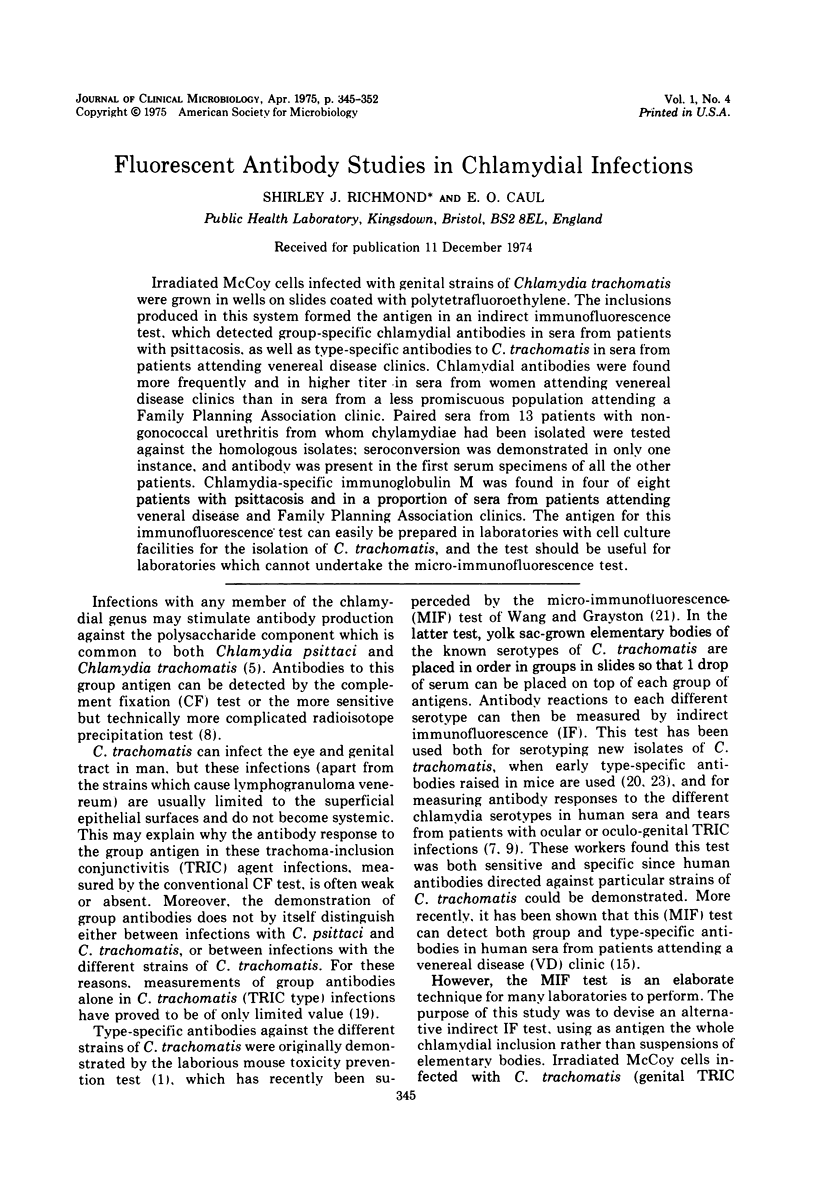
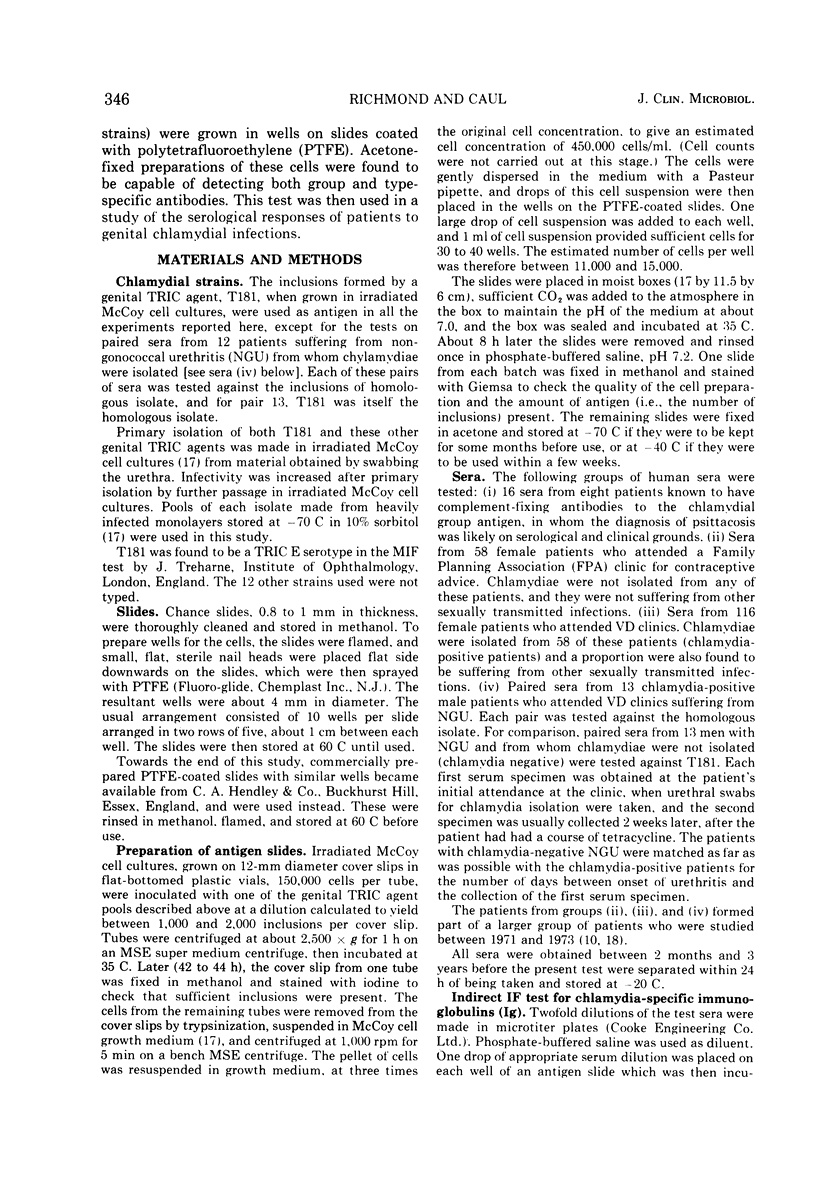
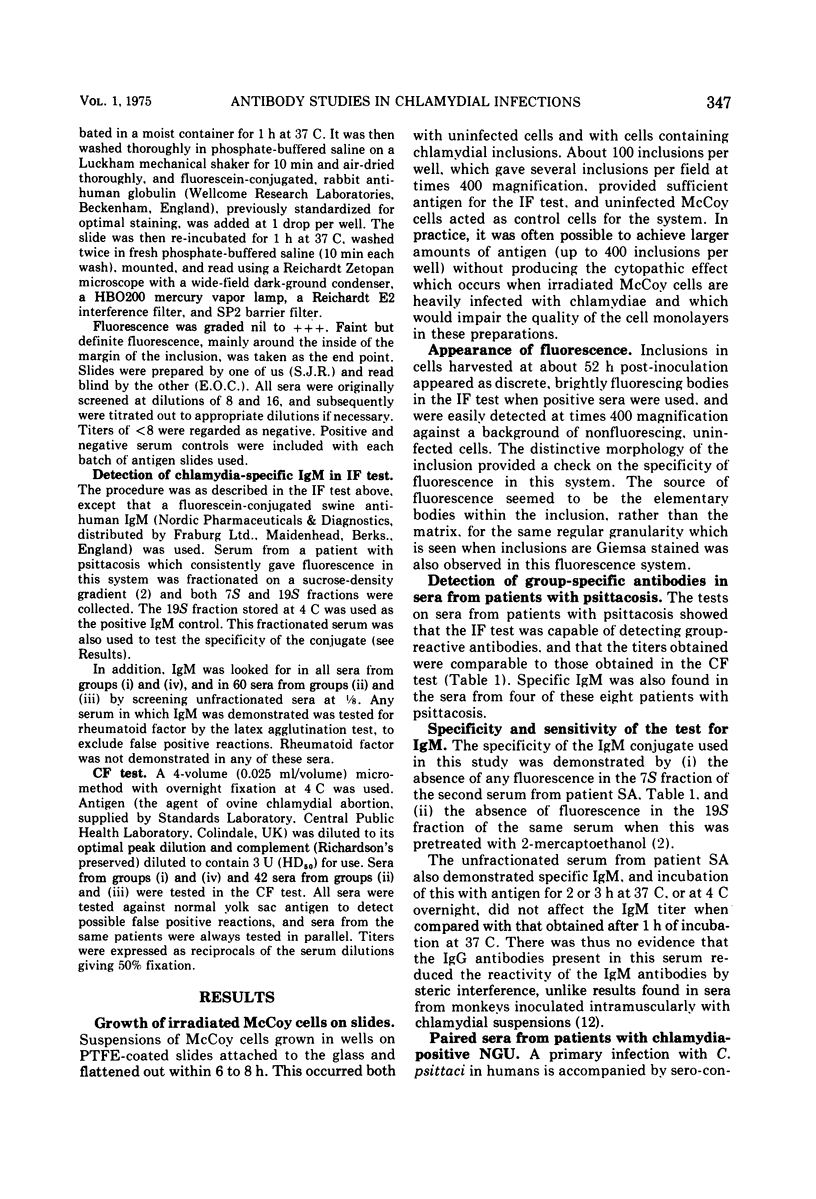
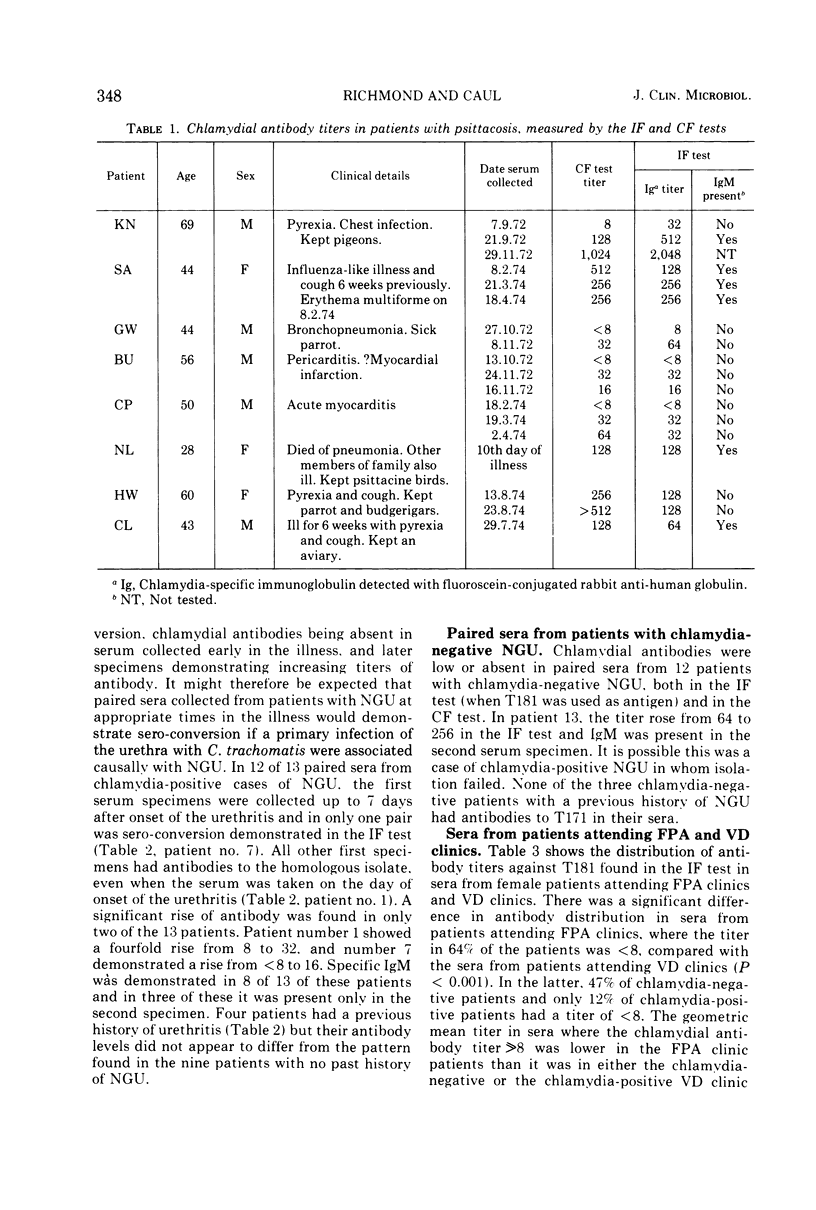
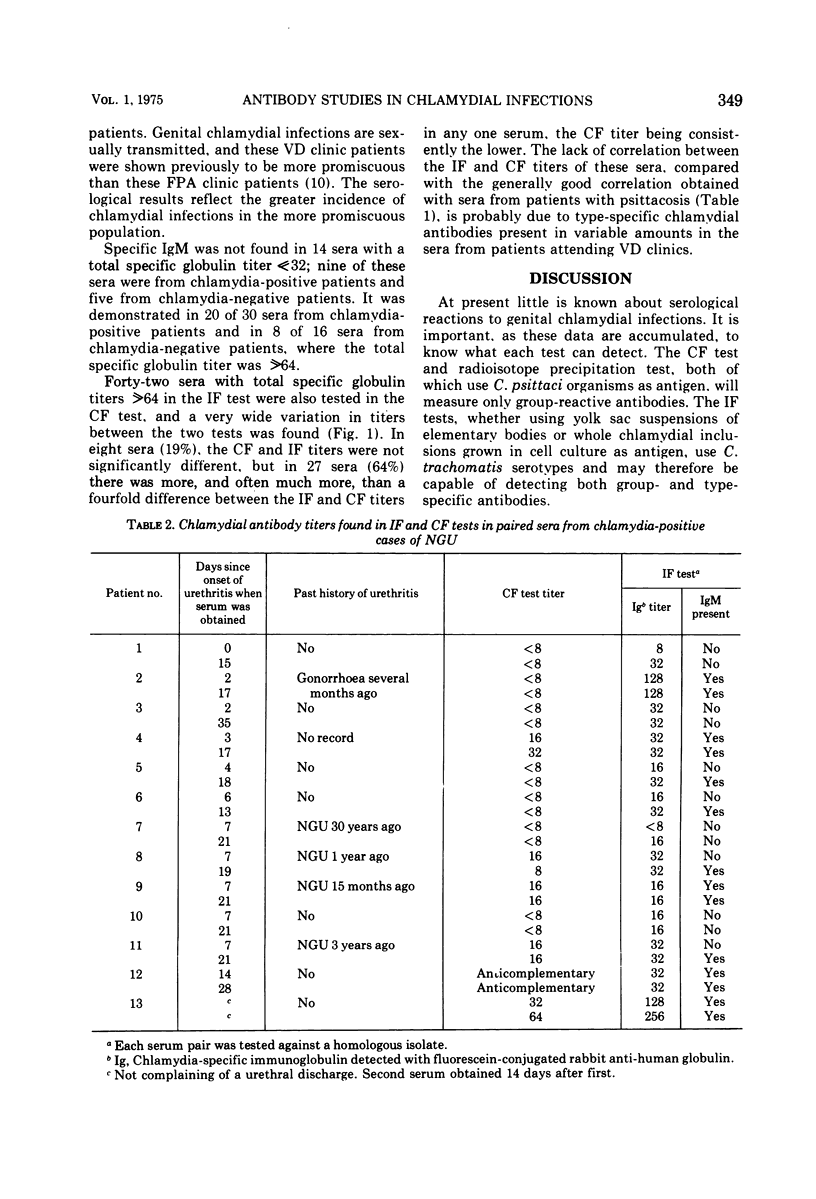
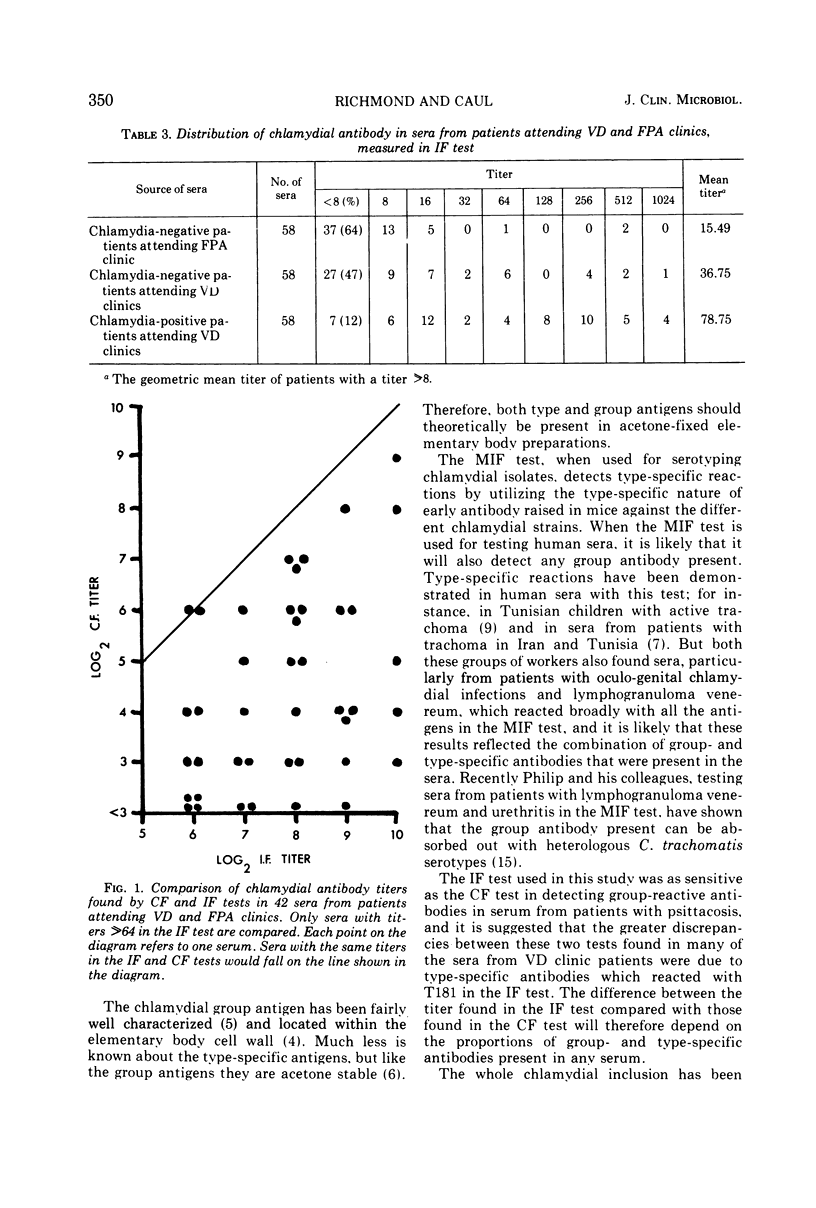
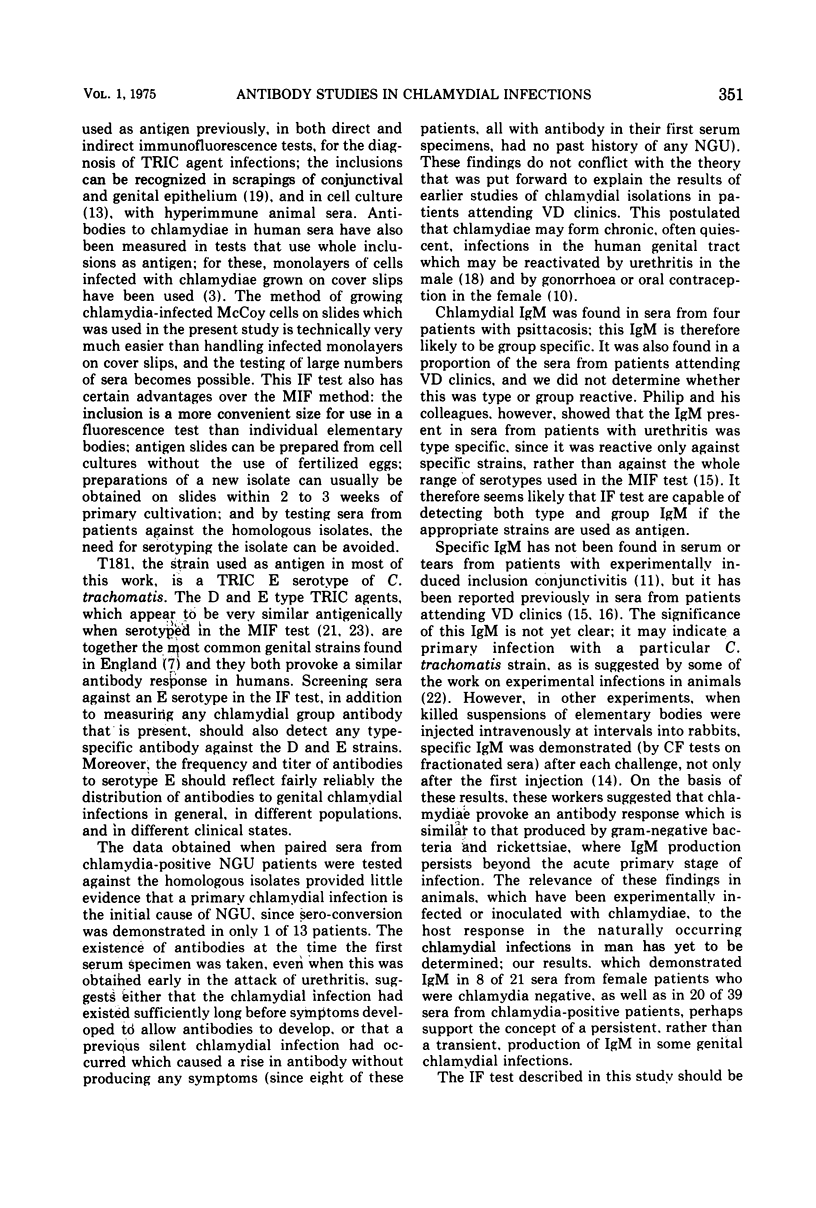
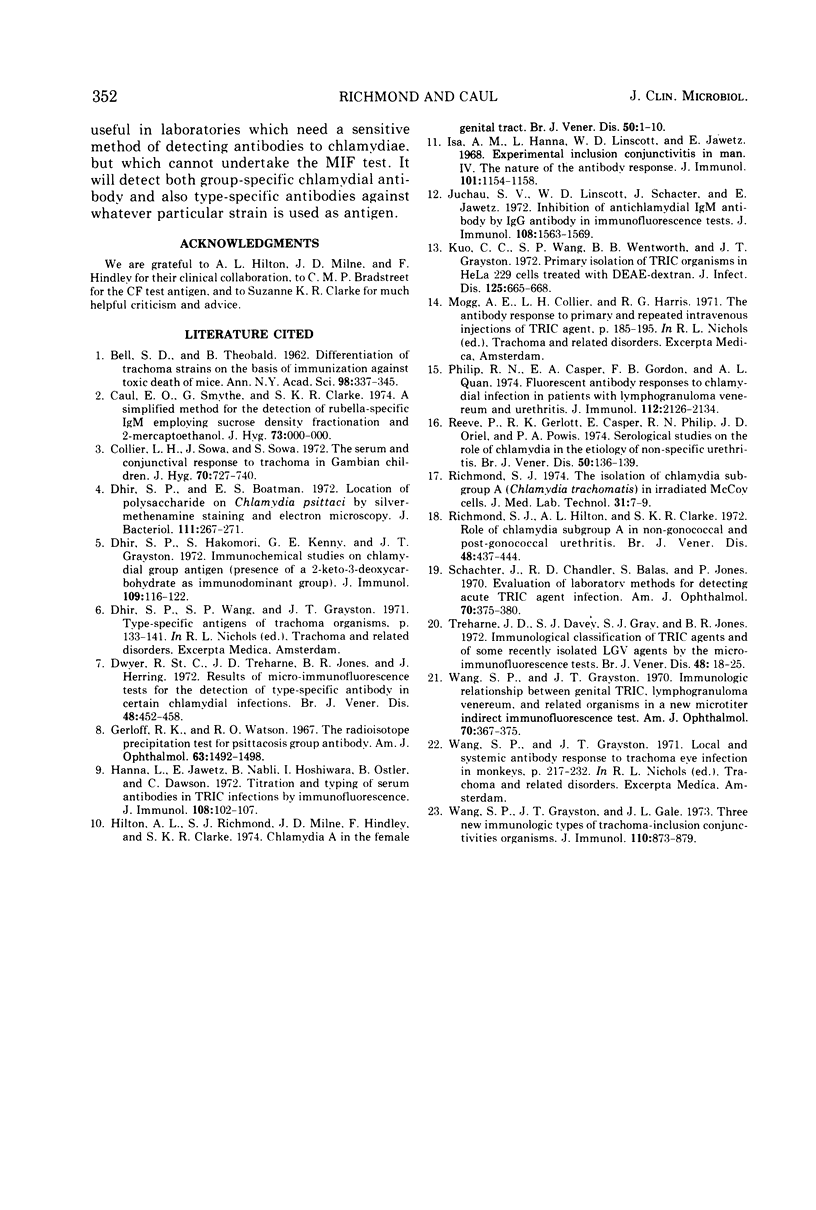
Selected References
These references are in PubMed. This may not be the complete list of references from this article.
- BELL S. D., Jr, THEOBALD B. Differentiation of trachoma strains on the basis of immunization against toxic death of mice. Ann N Y Acad Sci. 1962 Mar 5;98:337–346. doi: 10.1111/j.1749-6632.1962.tb30556.x. [DOI] [PubMed] [Google Scholar]
- Collier L. H., Sowa J., Sowa S. The serum and conjunctival antibody response to trachoma in Gambian children. J Hyg (Lond) 1972 Dec;70(4):727–740. doi: 10.1017/s0022172400022579. [DOI] [PMC free article] [PubMed] [Google Scholar]
- Dhir S. P., Boatman E. S. Location of polysaccharide on Chlamydia psittaci by silver-methenamine staining and electron microscopy. J Bacteriol. 1972 Jul;111(1):267–271. doi: 10.1128/jb.111.1.267-271.1972. [DOI] [PMC free article] [PubMed] [Google Scholar]
- Dhir S. P., Hakomori S., Kenny G. E., Grayston J. T. Immunochemical studies on chlamydial group antigen (presence of a 2-keto-3-deoxycarbohydrate as immunodominant group). J Immunol. 1972 Jul;109(1):116–122. [PubMed] [Google Scholar]
- Dwyer R. S., Treharne J. D., Jones B. R., Herring J. Chlamydial infection. Results of micro-immunofluorescence tests for the detection of type-specific antibody in certain chlamydial infections. Br J Vener Dis. 1972 Dec;48(6):452–459. doi: 10.1136/sti.48.6.452. [DOI] [PMC free article] [PubMed] [Google Scholar]
- Gerloff R. K., Watson R. O. The radioisotope precipitation test for psittacosis group antibody. Am J Ophthalmol. 1967 May;63(5 Suppl):1492–1498. doi: 10.1016/0002-9394(67)94137-2. [DOI] [PubMed] [Google Scholar]
- Hanna L., Jawetz E., Nabli B., Hoshiwara I., Ostler B., Dawson C. Titration and typing of serum antibodies in TRIC infections by immunofluorescence. J Immunol. 1972 Jan;108(1):102–107. [PubMed] [Google Scholar]
- Isa A. M., Hanna L., Linscott W. D., Jawetz E. Experimental inclusion conjunctivitis in man. IV. The nature of the antibody response. J Immunol. 1968 Dec;101(6):1154–1158. [PubMed] [Google Scholar]
- Juchau S. V., Linscott W. D., Schachter J., Jawetz E. Inhibition of antichlamydial IgM antibody by IgG antibody in immunofluorescence tests. J Immunol. 1972 Jun;108(6):1563–1569. [PubMed] [Google Scholar]
- Kuo C., Wang S., Wentworth B. B., Grayston J. T. Primary isolation of TRIC organisms in HeLa 229 cells treated with DEAE-dextran. J Infect Dis. 1972 Jun;125(6):665–668. doi: 10.1093/infdis/125.6.665. [DOI] [PubMed] [Google Scholar]
- Philip R. N., Casper E. A., Gordon F. B., Quan A. L. Fluorescent antibody responses to chlamydial infection in patients with lymphogranuloma venereum and urethritis. J Immunol. 1974 Jun;112(6):2126–2134. [PubMed] [Google Scholar]
- Reeve P., Gerloff R. K., Casper E., Philip R. N., Oriel J. D., Powis P. A. Serological studies on the role of Chlamydia in the aetiology of non-specific urethritis. Br J Vener Dis. 1974 Apr;50(2):136–139. doi: 10.1136/sti.50.2.136. [DOI] [PMC free article] [PubMed] [Google Scholar]
- Richmond S. J., Hilton A. L., Clarke S. K. Chlamydial infection. Role of Chlamydia subgroup A in non-gonococcal and post-gonococcal urethritis. Br J Vener Dis. 1972 Dec;48(6):437–444. doi: 10.1136/sti.48.6.437. [DOI] [PMC free article] [PubMed] [Google Scholar]
- Richmond S. J. The isolation of Chlamydia subgroup A (Chlamydia trachomatis) in irradiated McCoy cells. Med Lab Technol. 1974 Jan;31(1):7–9. [PubMed] [Google Scholar]
- Schachter J., Dawson C. R., Balas S., Jones P. Evaluation of laboratory methods for detecting acute TRIC agent infection. Am J Ophthalmol. 1970 Sep;70(3):375–380. doi: 10.1016/0002-9394(70)90097-8. [DOI] [PubMed] [Google Scholar]
- Treharne J. D., Davey S. J., Gray S. J., Jones B. R. Immunological classification of TRIC agents and of some recently isolated LGV agents by the micro-immunofluorescence test. Br J Vener Dis. 1972 Feb;48(1):18–25. doi: 10.1136/sti.48.1.18. [DOI] [PMC free article] [PubMed] [Google Scholar]
- Wang S. P., Grayston J. T., Gale J. L. Three new immunologic types of trachoma-inclusion conjunctivitis organisms. J Immunol. 1973 Mar;110(3):873–879. [PubMed] [Google Scholar]
- Wang S. P., Grayston J. T. Immunologic relationship between genital TRIC, lymphogranuloma venereum, and related organisms in a new microtiter indirect immunofluorescence test. Am J Ophthalmol. 1970 Sep;70(3):367–374. doi: 10.1016/0002-9394(70)90096-6. [DOI] [PubMed] [Google Scholar]


